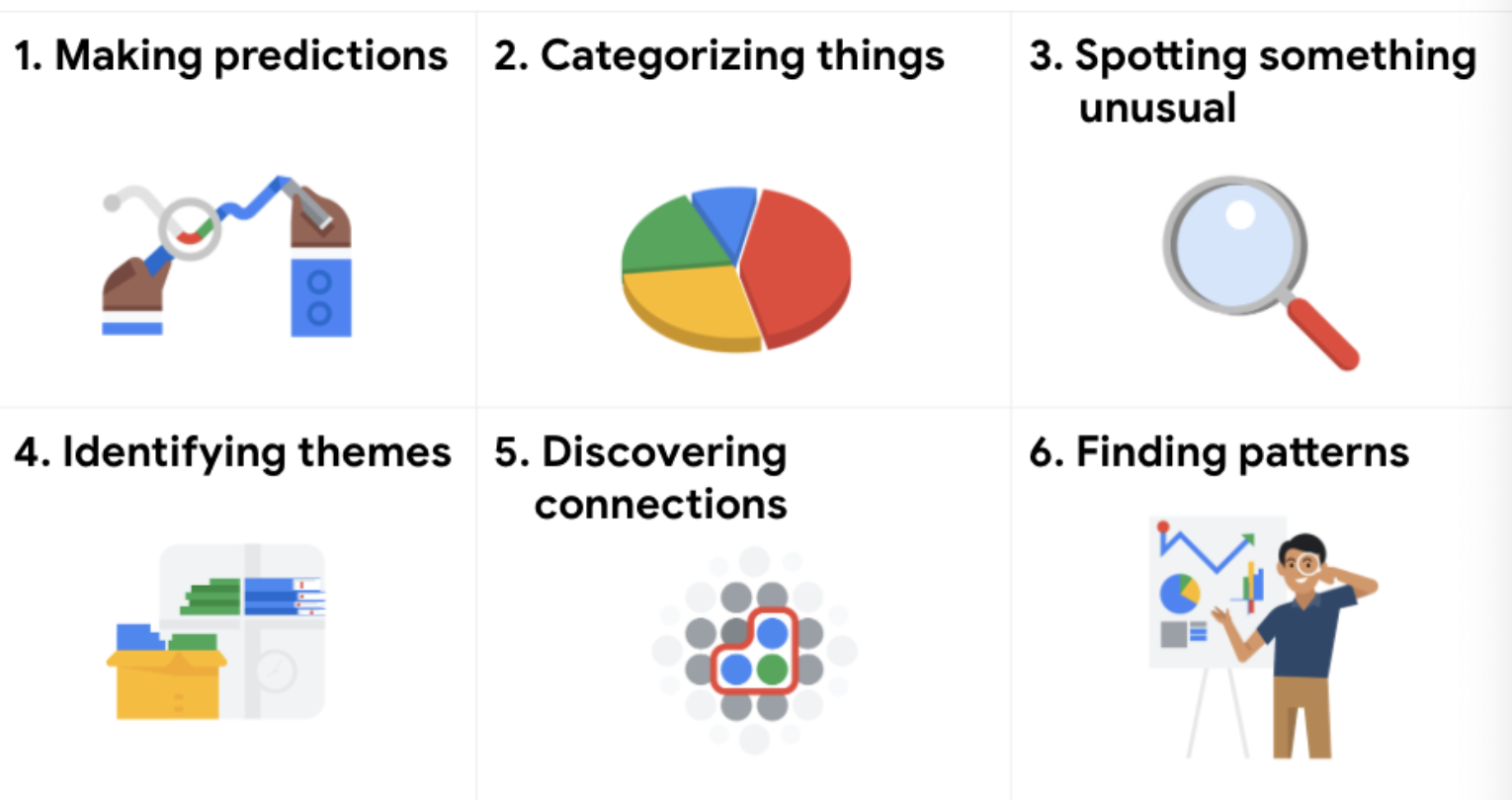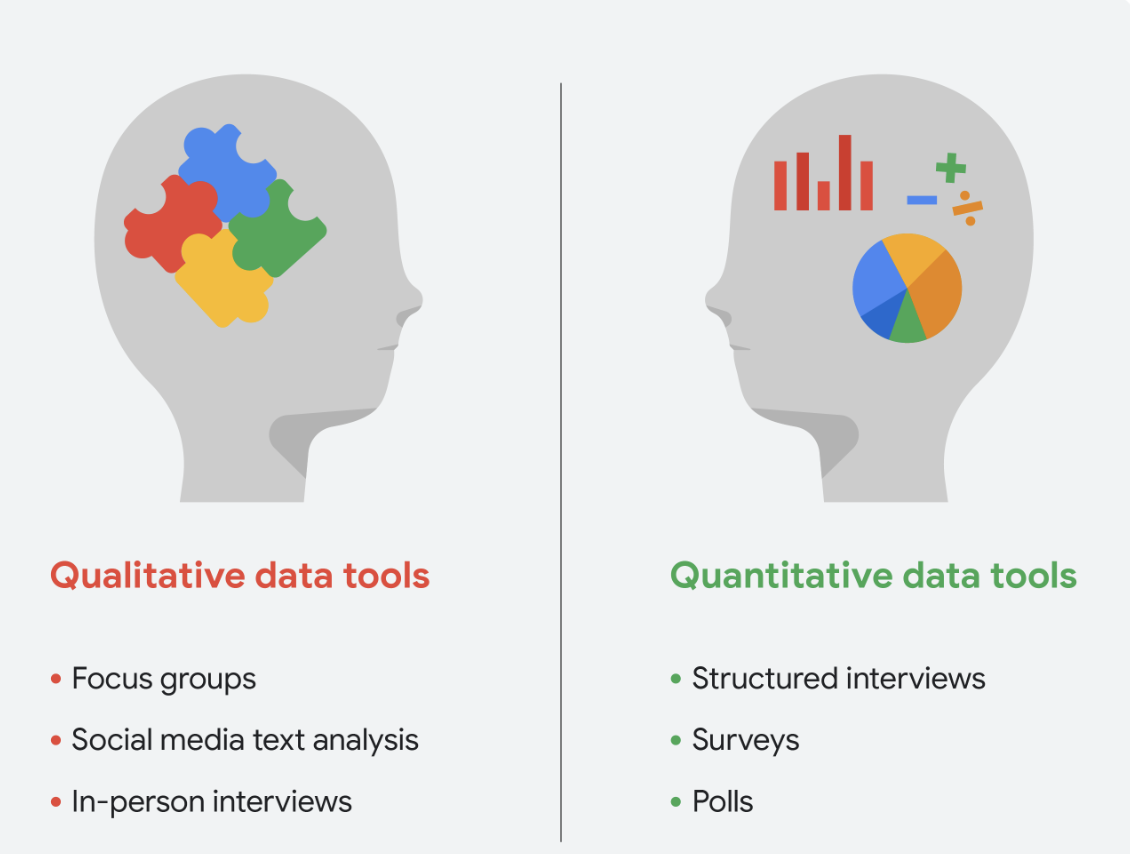Code&Data Insights
[Google Data Analytics Professional Certificate] Ask Questions to Make Data-Driven Decisions + Spread Sheet (Google|Excel) 본문
[Google Data Analytics Professional Certificate] Ask Questions to Make Data-Driven Decisions + Spread Sheet (Google|Excel)
paka_corn 2023. 5. 17. 10:47[ Common Problem Types ]
1. Making predictions
2. Categorizing things - categorized by specific keyword or score
3. Spotting something unusal
4. Identifying themes - Grouping categorized info into broader concepts
5. Discovering connections
6. Finding patterns - using historical data to understand what happened in the past and is therefore likely to happen again

[ SMART questions ]
=> kinds of questions we could ask : Leading Question, Closed-ended Question, Questions that are too vague and lack context (Not GOOD!)

Specific - Simple , Do NOT ask Closed-ended Question

[ Qualitative and quantitative data ]
Quantitative data : specific and objective measures of numerical facts
- how many? how often?
Qualitative data : subjective or explanatory measures of qualities and characteristics
- why ?

=> Qualitative data can help analysts better understand their quantitative data by providing a reason or more thorough explanation
[ Desigining Compelling Dashboard ]

[ Spread Sheet ]
Organize the data
- Pivot table
=> Sort and filter
Calculate the data
- Formula : use operators(arithmetic)
- Error (Formula)
#DIV/0! : a formula is trying to divide a value in a cell by 0 or by an empty cell
=> way to prevent : use IFERROR(operation ,"Not applicable" )
#N/A : data in a formula can't be found by the spreadsheet
#NAME? : The name of a function is misspelled
#NUM!: can't perform a formula calculation because a cell has an invalid numeric value
#VALUE! : a general error that could indicate a problem with a formula or referenced cells
#REF! : A cell used in a formula was in a column that was deleted
- Function
[ The Importance of Context ]
Context - the condition in which something exists or happens
- Context can turn raw data into meaningful information
- Who: The person or organization that created, collected, and/or funded the data collection
- What: The things in the world that data could have an impact on
- Where: The origin of the data
- When: The time when the data was created or collected
- Why: The motivation behind the creation or collection
- How: The method used to create or collect it
=> By asking these 6 questions, we can reduce potential bias.
- Understanding and including the context is important during each step of your analysis process !!!

< Glossary >
Unfair question: A question that makes assumptions or is difficult to answer honestly
Relevant question: A question that has significance to the problem to be solved
Measurable question: A question whose answers can be quantified and assessed
Leading question: A question that steers people toward a certain response
Outliers : outliers in data analysis are observations that significantly deviate from the normal pattern of the dataset and can have a notable impact on statistical analysis.
Commonality : The commonality in data analysis refers to identifying patterns, trends, and relationships within the dataset to gain insights and make informed decisions.
Pivot table : a data summarization tool that is used in data processing. Pivot tables are used to summarize, sort, reorganize, group, count, total or average data stored in a database.
Metric : single, quantifiable type of data that can be used for measurement
Problem domain : the specific area of analysis that encompasses every activity affecting or affected by the problem




